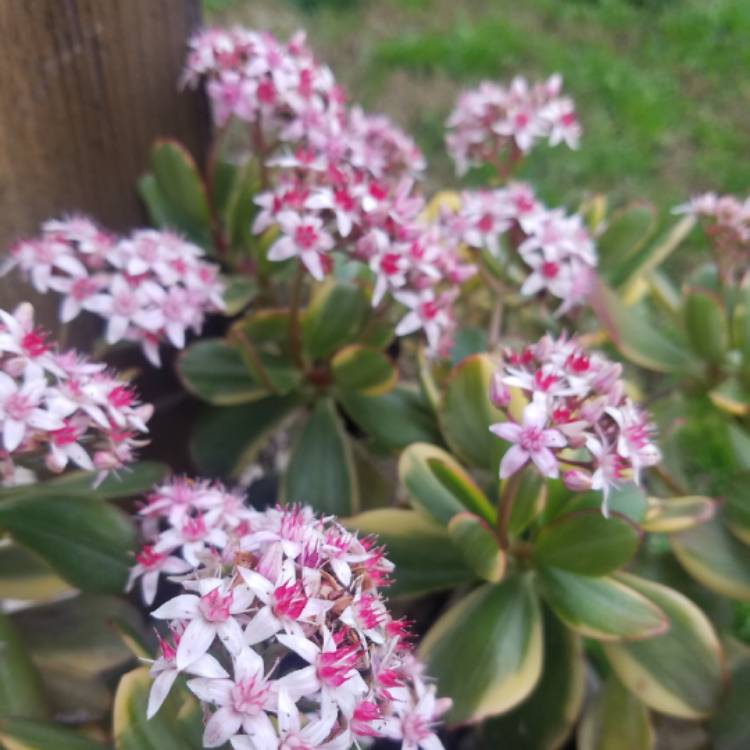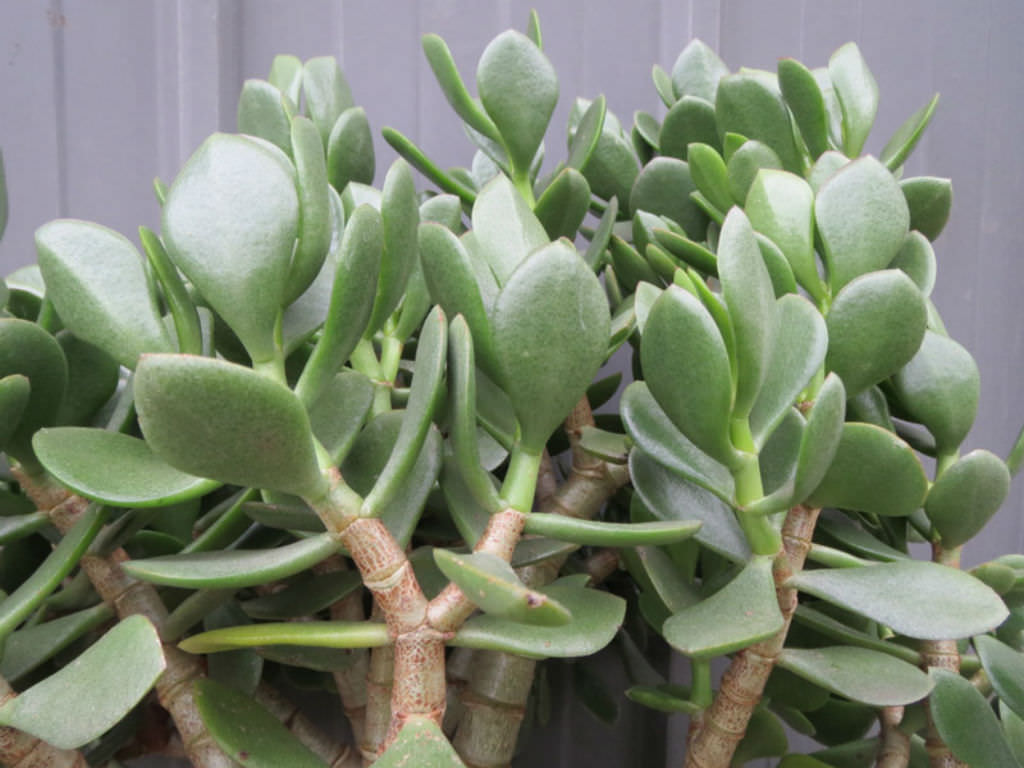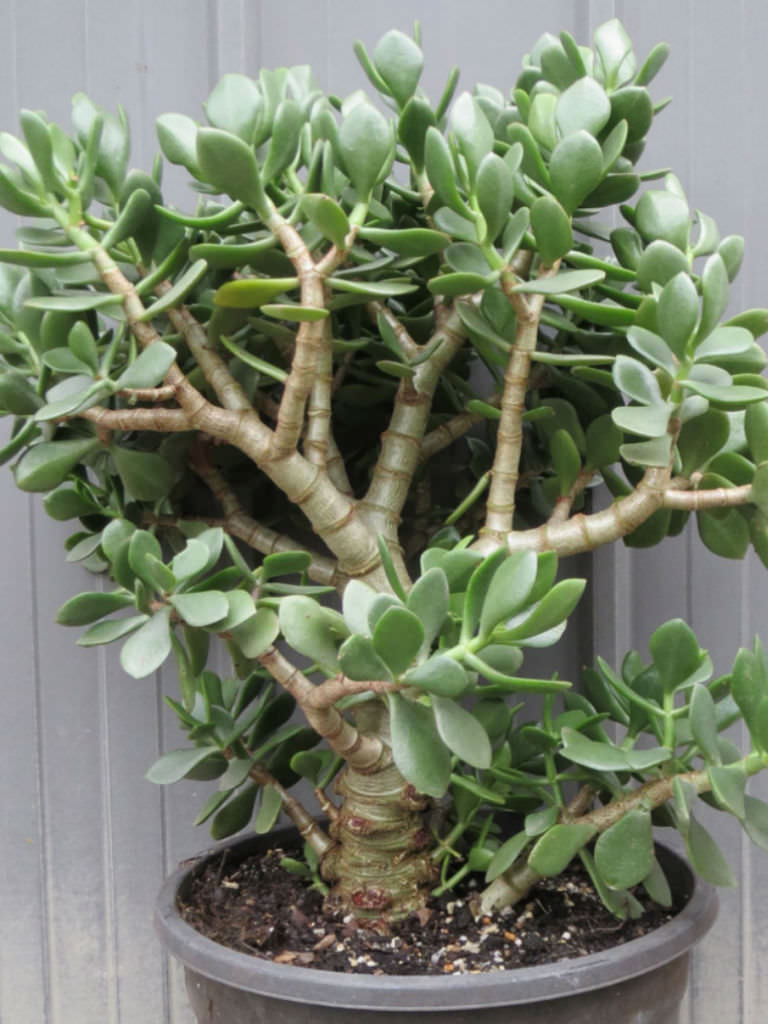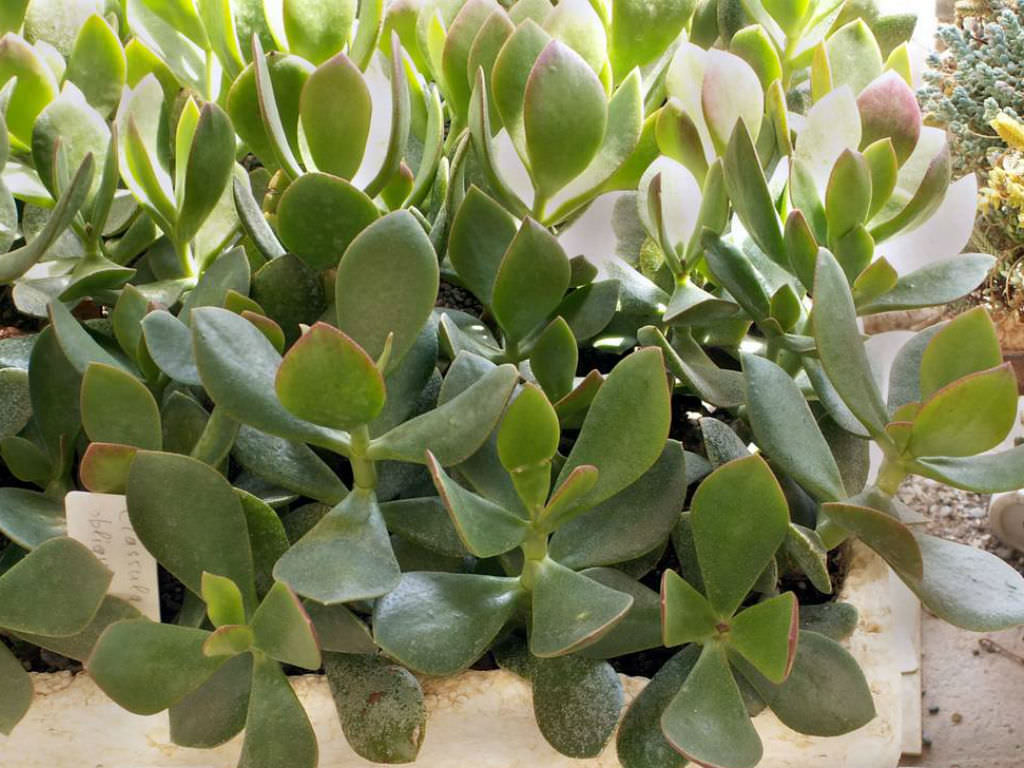
Crassula ovata 'Obliqua' Mountain Crest Gardens
Cotyledon ovata Mill. Toelkenia ovata (Mill.) P.V.Heath; Crassula argentea Thunb. Crassula articulata Zuccagni; Crassula lucens Gram; Crassula nitida Schönland; Crassula obliqua Aiton; Crassula portulacea Lamarck; Cotyledon ovata f. variegata hort. Crassula portulacea f. variegata hort. Cultivars (3): Crassula ovata cv. Himekagetsu; Crassula.

crassula ovata obliqua variegata
Crassula ovata 'Lemon & Lime' syn. Crassula obliqua . Lemon & Lime Jade Plant. Crassula are succulent, herbaceous plants. Some varieties are suitable for rock gardens in mild regions as long as the soil is well drained. The thick leaves are often covered with hair or 'meal' and the flowers are generally small in size and borne on terminal panicles.

Crassula ovata 'Lemon & Lime' syn. Crassula obliqua, Lemon & Lime Jade
Crassula Ovata variegata Obliqua Hobbit / Gollum Denethor Didier Scientific name:'Didier' Rarity (1-10) 7 "Didier' is most likely a Hybrid likely between a Crassula Ovata cultivar and a Crassula Arborescens cultivar . It features a unique shape and format of its leaves as well as red rimed leaves under bright and cool conditions

Crassula ovata 'Obliqua' (Jade Plant) World of Succulents
Crassula. Genus description. Crassula can be succulent annuals, perennials, evergreen shrubs or sub-shrubs, with fleshy leaves and small, star-shaped or funnel-shaped flowers in a terminal cluster. Name status. Accepted. Advertise here. Find help & information on Crassula ovata 'Obliqua' from the RHS.

Crassula ovata 'Obliqua' (Jade Plant) World of Succulents
Crassula ovata, commonly known as jade plant, lucky plant, money plant or money tree, is a succulent plant with small pink or white flowers that is native to the KwaZulu-Natal and Eastern Cape provinces of South Africa, and Mozambique; it is common as a houseplant worldwide. [2]

Crassula Ovata Obliqua Jade Plant & Succulent Care Guide Succulents Box
Crassula Ovata is also known as the jade plant, lucky plant, friendship plant, and money plant. It is thought to bring good luck and good fortune to those who own one. This plant is immensely popular as a houseplant, but in some grow zones, this plant can even be used as a beautiful landscape plant. Characteristics Of Jade Plants

Crassula ovata 'Obliqua' (Jade Plant) World of Succulents
Crassula ovata is a common houseplant that is usually called jade plant, or less frequently referred to as friendship plant, money plant, or silver dollar plant. Previously classified as C. argentea, C. portulaca and C. obliqua, it is still occasionally sold under these other, older (and incorrect) names.

Crassula ovata cv. Obliqua
Cotyledon ovata, Crassula argentea, Crassula obliqua, Crassula portulacea, Toelkenia ovata. Scientific Classification. Family: Crassulaceae Subfamily: Crassuloideae Genus: Crassula. Description. Crassula ovata is a popular succulent shrub or small tree with branches that bear rounded, shiny green leaves, often edged with red. It can grow up to.

crassula ovata obliqua Crassula Ovata, Succulents, Plants, Courtyards
Crassula ovata 'Obliqua' is a succulent shrub with thick, fleshy, green leaves with pointed tips. It usually grows over 1 foot (30 cm) tall. The leaves are flushed with royal purple at the edges when exposed to direct sunlight. They are attached at a more upright angle to the branch than the leaves of Crassula ovata.

Crassula Ovata Obliqua Jade Plant Jade plant bonsai, Jade plants
Crassula ovata 'Obliqua' (Variegated Jade Plant) - A many-branching succulent shrub to 4-6 feet tall with thick stems that hold pale-green, obovate pointed leaves that are streaked with a white variegation. New growth sometimes has a hint of pink over the white. White star-like flowers bloom in clusters within the foliage in the fall.

Sukulent Crassula ovata v. obliqua (Drvo novca) (56202139)
Crassula Ovata are succulent plants with deep green leaves that originate from South Africa. They are often called Jade plants or money tree. They were previously classified as Crassula portulaca and Crassula Obliqua. They have thick, fleshy leaves. They are a medium maintenance plant. If cared for well, they can grow star shaped flowers, white.

Crassula ovata 'Obliqua Variegata Types Of Cactus Plants, Purple Plants
Scientific name Crassula ovata 'Obliqua' Genus Crassula Family Crassulaceae Order Saxifragales Also known as Crassula Oblique and Crassula obliqua How to care for Jade Plant Water Light Nutrients Jump to summary ↓ 💦 Water How often to water your Jade Plant 0.8 cups every 12 days

Crassula ovata obliqua Calara Cacti and Succulents
Variegated jade plant is a subtropical, broadleaf evergreen, multi-stemmed, erect, succulent, perennial shrub in the Crassulaceae (stonecrop) family that is native to South Africa and grown as a houseplant in North Carolina. The species name ovata means egg-shaped, referring to the thick, fleshy leaves.

Crassula Ovata Obliqua Variegata Echeveria, Crassula Succulent
Crassula Ovata is also known as the 'Obliqua'. As the plant matures you can expect it to reach up to 30 cm (12″) tall. The plants main feature are the leaves that are both beautiful light green to matt green fleshy and vibrant. When the plant finally produces flowers you can expect it to produces white flowers. Scientific Classification

Crassula obliqua f.variegata by sinammonite on DeviantArt
Crassula is a diverse genus of succulent plants, with about 300 small and large species, including the emerald green jade (Crassula ovata).Crassula plants can be annuals to perennials, herbaceous or woody plants, groundcovers, shrubs, and small trees. They naturally grow in South Africa, thriving with at least six hours of direct sun and sandy, well-draining soil.

CUTTINGS Variegated Crassula ovata plants, Live Unrooted, (two, 23
Watering. Water your Crassula Ovata sparingly. Allow the soil to become completely dry between waterings. Water the plant just enough to moisten the soil; over-watering will cause the roots to rot. Water even less in winter but don't stop altogether; arid soil is not healthy for the leaves.